
Imago
NASCAR, Motorsport, USA Coke Zero Sugar 400 Aug 23, 2025 Daytona Beach, Florida, USA Ryan Blaney 22 and team celebrate the win during the Coke Zero Sugar 400 at Daytona International Speedway. Daytona Beach Daytona International Speedway Florida USA, EDITORIAL USE ONLY PUBLICATIONxINxGERxSUIxAUTxONLY Copyright: xMikexWattersx 20250823_tdc_sk4_222

Imago
NASCAR, Motorsport, USA Coke Zero Sugar 400 Aug 23, 2025 Daytona Beach, Florida, USA Ryan Blaney 22 and team celebrate the win during the Coke Zero Sugar 400 at Daytona International Speedway. Daytona Beach Daytona International Speedway Florida USA, EDITORIAL USE ONLY PUBLICATIONxINxGERxSUIxAUTxONLY Copyright: xMikexWattersx 20250823_tdc_sk4_222
Ryan Blaney’s long-awaited Daytona triumph carried more weight than just another superspeedway victory; it ended a 10-year stretch where pole-sitters failed to close the deal at the track. For nearly a decade, the advantage of starting up front had been more of a burden than a blessing, with strategy twists and fuel mileage often undoing early dominance. So how did Blaney manage to break that curse?
Watch What’s Trending Now!
Blaney flipped that narrative, relying on precision, patience, and well-timed decisions to turn the so-called curse into a defining moment. His approach at Daytona proved that calculated execution, not simply raw speed, is what finally lifted the weight of that decade-long drought. After the race, he shed light on the strategy he used for this.
ADVERTISEMENT
Ryan Blaney’s strategy that changed everything
When asked post-race about becoming the first pole-sitter since 2015 to finally cash in at Daytona, Blaney pulled the lens back. His description wasn’t about luck or raw speed—two qualities often synonymous with superspeedway victories, but about deliberately navigating each stage with a deep awareness of fuel, track position, and playoff points.
“We just kinda… the way the strategy played out, it kinda forced our hand a little bit,” Blaney said during the interview, breaking down how the race forced him to burn more than he wanted early. Starting up front meant racing aggressively for stage points to keep pace with championship rivals like the No. 9, No. 5, and No. 11. That tactic, however, came at a cost: “I’m burning a lot of gas trying to stay up there, where other guys halfway through the pack could save.”
The pivotal chess move came courtesy of crew chief Jonathan Hassler. After the fuel burn of Stage One left the team needing extra gas, Hassler called for Blaney to drop back and ride in conservation mode. “Jonathan just made the call, like, just save as much gas as you can. So I kinda just rode around the back and really, really became a hybrid back there,” Blaney explained, noting how this laid the groundwork for later positioning.
ADVERTISEMENT
By saving through Stage 2 and avoiding a pit stop that many others couldn’t skip, Blaney’s team inverted the problem. They traded early visibility for late-race flexibility. In Stage 3, that meant taking less fuel under green and unleashing the car earlier than most competitors. “It allowed us to go harder earlier than others and kinda establish ourselves a little bit, to where we could then position ourselves for, you know… what happened essentially,” Blaney concluded.
What stood out was how it set the tone for Stage 3. Needing less fuel on the final stop meant Blaney could attack earlier and establish himself near the front while others were still conserving. In superspeedway racing, where chaos is almost guaranteed in the closing laps, positioning is everything. Blaney’s ability to be in the right place at the right time, thanks to Hassler’s strategy, became the difference between blending into the draft and ultimately breaking the streak that had loomed since 2015.
ADVERTISEMENT
The 31-year-old’s breakdown revealed a simple but striking truth: the victory wasn’t about dominating wire to wire. It hinged on playing the long game, interpreting shifting variables, and trusting a strategy most fans wouldn’t notice was unfolding in real time.
Top Stories
‘RIP’: NASCAR World Crumbles in Tears as 39-YO Former JR Motorsports Driver Passes Away
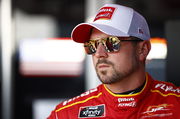
France Family’s ‘Financial Deception’ Spilled Out in the Open as RTA Memo Exposes the ‘49%’ Lie
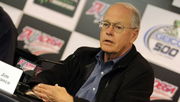
55-YO NASCAR Driver’s Untimely Death Shatters Racing Community
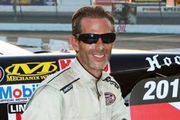
NASCAR President Kicks Up ‘SRX’ Firestorm With Courtroom Claim Fans Refuse to Accept
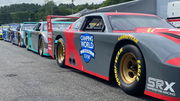
Dale Earnhardt & Tony Stewart Dethroned as SVG Shatters NASCAR Benchmark to Stand Alone in History
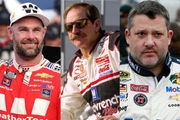
What does Ryan Blaney’s win mean beyond Daytona?
Ryan Blaney’s victory at Daytona wasn’t just a career milestone; it marked a defining moment that sets him apart in the increasingly competitive NASCAR landscape. Despite being compared frequently to legends like Dale Earnhardt Sr., Blaney remains grounded, emphasizing that his style is shaped more by patience, discipline, and learning from teammates than by intimidation or sheer aggression. Unlike Earnhardt’s legendary “Intimidator” reputation, Blaney credits the experience gained from working alongside drivers.
ADVERTISEMENT
Blaney explained, “I think, yeah, I feel like I do a decent job. I feel like it comes from, I got to learn from a couple of great guys. Like watching Joey and Brad when I got to Pensky and just being around them and following them, and I got to see that for years, and I just was able to soak up all that information.”
His 2025 Daytona win also delivered a crucial playoff boost, sealing a strong run of consecutive top-10 finishes and propelling him into a prime championship position. Moreover, his triumph helped fellow driver Alex Bowman secure a playoff spot, highlighting the interconnected nature of racing fortunes in NASCAR’s high-stakes environment.
Blaney’s approach blends calculated risk with tactical discipline, proving that breaking a decade-old curse is as much about mindset and teamwork as it is about speed. This win signals a new chapter for Blaney, one focused less on living in the shadows of legends and more on forging his own legacy through smart, decisive racing and team cohesion.
ADVERTISEMENT
This mature, strategic outlook underscores how Blaney is evolving from a rising star into a championship contender who understands that victories, especially at tracks like Daytona, come from executing a larger vision rather than relying on luck or flash alone.
ADVERTISEMENT
ADVERTISEMENT
ADVERTISEMENT

